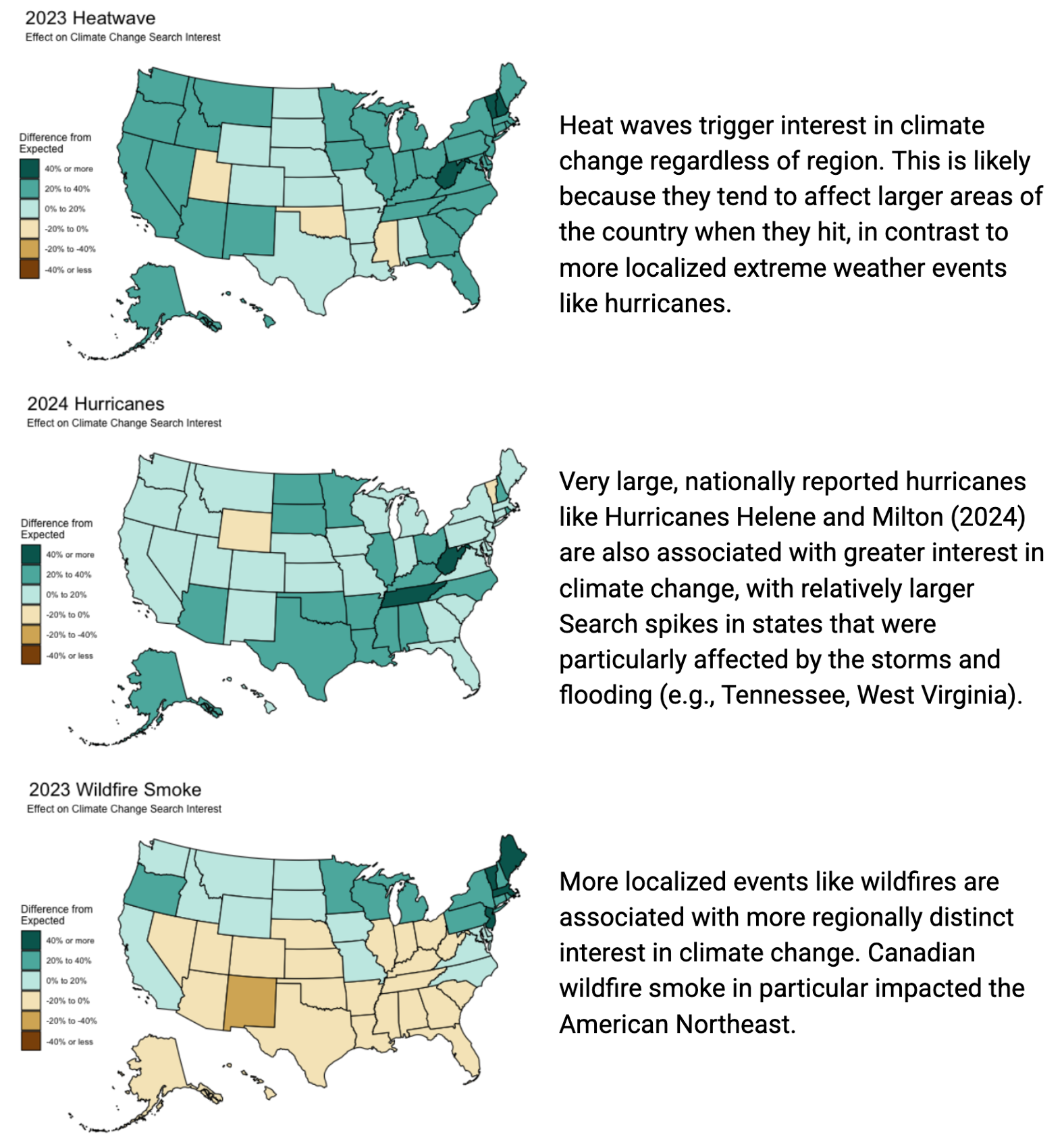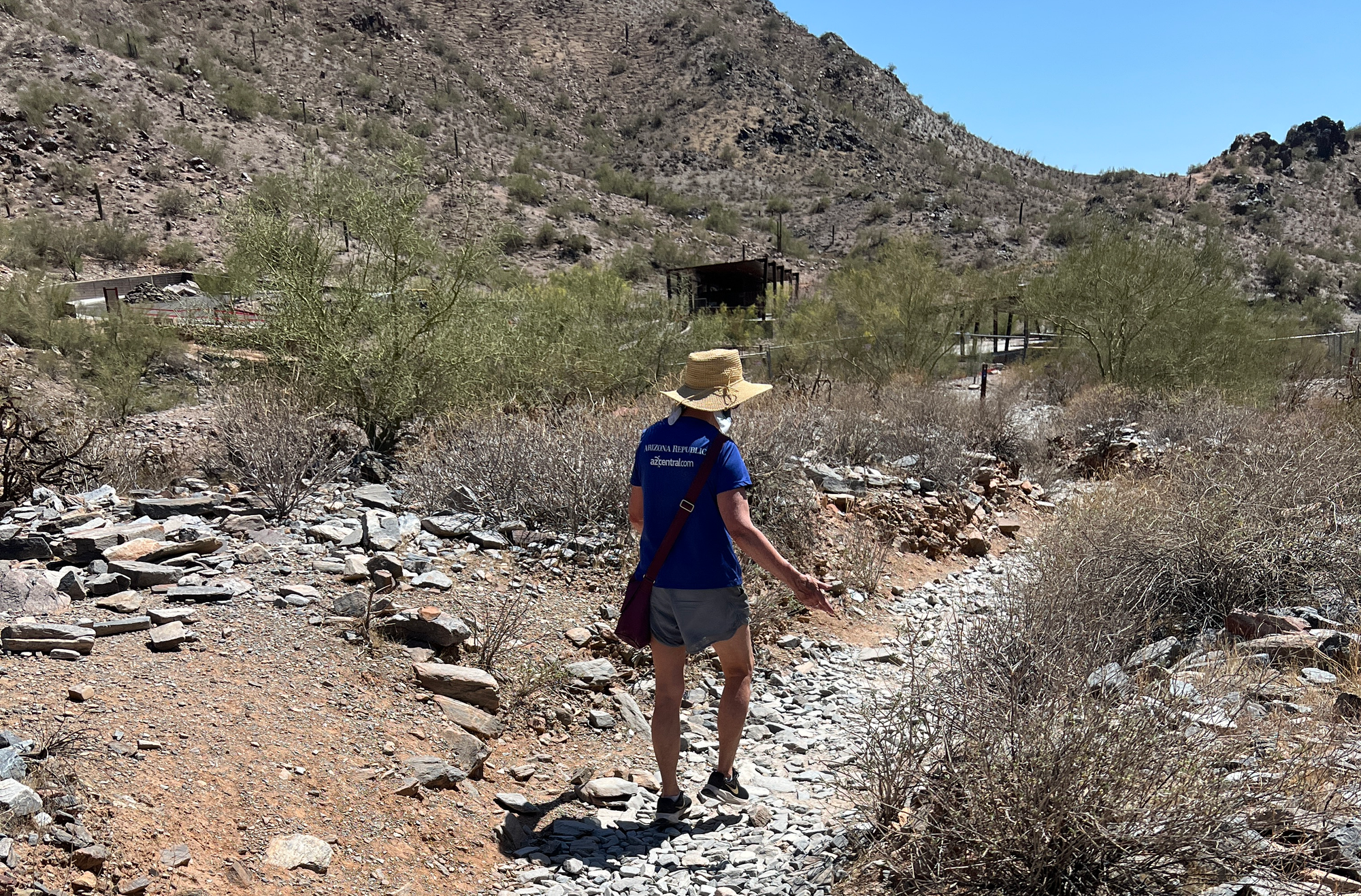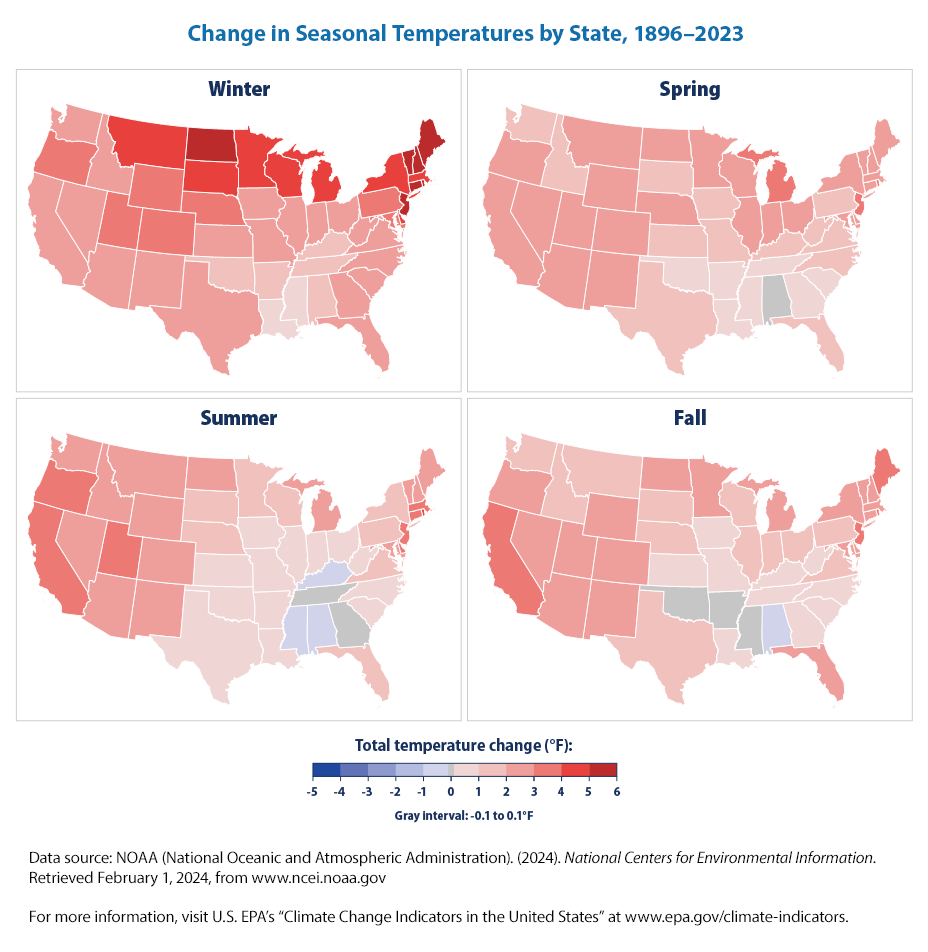From ski trails to hiking paths, extreme heat is reshaping recreation — and our attitudes
As rising temps change daily life, they’re fueling greater concern about climate change — more than wildfires or hurricanes, researchers say.

Republished by The Daily Courier
In south-central Wisconsin, near record warmth in January and two record-breaking summer heat waves have cross-country skiers nervous they won’t be getting much snow this winter — again.
And it’s not just skiers in Wisconsin who are worried. New research shows heat waves are prompting a growing number of Americans to make the connection between hotter weather and climate change.
Ski seasons in the United States have shrunk by an average of 5.5 to 7.1 days between 2000 and 2019 compared to the 1960s and ‘70s, according to a 2024 study by researchers from Canada and Austria. And in the coming 25 years, ski seasons could be even shorter — by between two weeks and three months — depending on how much the world reduces its greenhouse gas emissions, the researchers said.
Tamara Bryant, executive director of a cross-country ski club in Madison, Wisconsin, has seen this dynamic firsthand — both in her professional and personal lives.
“I remember the winters where my son could build snow forts in the front yard, year after year, and we're just not getting the same (amount of snow),” she said. “Having a white Christmas is not something we can totally rely on.”
Madison’s chain of lakes also aren’t freezing like they used to, creating hazards for people who fish on the ice.
Hilary Dugan, associate professor in the Center for Limnology at the University of Wisconsin-Madison, says back in the 1800s, lakes would remain frozen approximately 130 days a year, but now, on average, it’s maybe 75 days a year.
“That's something that people around here notice, because winter is a big part of life,” Dugan said. “Traditionally, winter would start in December (and) it would end probably like April. That meant that you could consistently go out and ice fish, cross-country ski, you know, winter recreation.
“We’re talking months of change — not just a couple of days.”

Heat curbs desert hiking
More than 1,700 miles away in Phoenix, dangerous heat has prompted officials to close the city’s extensive system of mountain trails. But that hasn’t stopped some from hiking in 100-degree-plus weather, leading to emergency rescues and the death of a 10-year-old last year.
The National Oceanic and Atmospheric Administration found 2024 was the hottest year in its 130-year climate record. NOAA reported the average annual temperature across the contiguous United States in 2024 was 55.5 degrees — or 3.5 degrees above the 20th-century average — heat that it said fueled a near-record number of tornadoes.
Hotter summers and warmer winters are not only disrupting outdoor activities. The record-breaking heat has also been driving national concern about climate change — more so even than dramatic events such as wildfires and hurricanes, according to new research.
Yale’s latest Climate Opinion Maps found that 65% of U.S. adults somewhat or strongly agree that global warming is affecting weather patterns, while 72% of adults nationally think global warming is real.
Its recent study showed that people’s interest in learning more about climate change consistently spikes during weather events like heat waves. And the public’s interest in climate change increases in specific areas experiencing extreme weather events, researchers found.
“Certain weather events — like heat waves — seem to produce consistent jumps in climate change interest across all regions simultaneously,” the researchers wrote, “while others — like wildfires — show more geographic variation.”

The study involved research through Yale’s partnership with Google. The team analyzed online search trends across the country, finding that searches on climate change followed “consistent and predictable patterns.”
Heat waves in 2023 sparked consistent interest in climate change, the study found, while Hurricanes Helene and Milton in 2024 garnered an increase in searches only in the places affected by those storms. Similarly, interest in climate change increased during bouts of wildfires in the United States and Canada, but only in the areas most directly affected by the smoke, the study found.
The authors suggest the findings can be used by officials to help people prepare for extreme weather. And, the authors note, “This timing could help the public better understand the need to transition to renewable energy sources, reduce fossil fuels, update risk assessments, increase planning, and strengthen building codes.”
Heat not just inconvenient — it’s deadly
Climate Central’s analysis of heat streaks between 1970 to 2024 found that their frequency has at least doubled in nearly 200 cities across the Southwest, Northeast, Ohio River Valley and southeastern parts of the country — and those heat waves were attributed to greenhouse gas emissions.
The data, released in July by the nonprofit group of scientists and climate researchers, also found heat waves are the leading cause of weather-related deaths in the United States. In 2023, the group reported that 2,325 people in the United States died from extreme heat — a record high.
This heat, Phoenix Fire Department Capt. Rob McDade said, “It's very dangerous.” In July 2024, a 10-year-old boy died from heat-related injuries while hiking South Mountain Park and Preserve with his family.
In 2021, Phoenix adopted a safety program to restrict access on parts of the city’s 200-plus miles of trails during extreme heat — especially on rugged stretches where it's more difficult for the fire department to rescue hikers.
“We have more people hiking than ever, and we are seeing rescues that have to happen that definitely are related to the heat,” said Jarod Rogers, deputy director of the city’s Parks and Recreation Department.
Last year, between May 1 and Oct. 13, the city had 45 days of trail closures due to extreme heat. Since adopting the safety program, there have been fewer rescues — from 57 in 2021 down to 35 in 2024.
“The proof is in the pudding,” McDade said. “Setting up these restrictions is dramatically cutting back those extreme-(heat) day mountain rescues.”

Warm weather hits winter sports
Rising temperatures are causing a different kind of risk in northern regions. Last winter, Dugan said she repeatedly heard about people being rescued after falling through melting lake ice.
“It felt higher than normal,” she said. “People are willing to go out on the thinnest ice to go get some fish. It’s definitely a passion for people here.”
Skiers are also feeling the burn from a warmer climate. Bryant, executive director for the MadNorSki Club (Madison Nordic Ski), said there has been little snow in recent years, shortening the cross-country skiing season.
Annual snowfall in Madison has decreased over the past three winters from 70 accumulated inches in 2022, 43 inches in 2023 and 22 inches in 2024.
Bryant said popular ski races have had to cancel because of the lack of snowfall. Some event organizers have resorted to using artificially made snow.
In 2017, organizers of the American Birkebeiner race, (“Birkie”) which draws more than 10,000 nordic skiers to northern Wisconsin each year, cancelled its cross-country ski races due to lack of snow
In 2024, another low-snow year, Birkie organizers used snowmaking machines to create a 10-kilometer ski loop instead of the normally linear 50- or 53-kilometer course.
“In the photos, you would see this little white ribbon of snow on the trail, and it was brown everywhere else,” Bryant said, calling the recent lack of snow in Wisconsin “freaky.”
Birkie spokesman Shawn Connelly said the American Birkebeiner Ski Foundation has kepr its ski events running thanks to donor funding to purchase the snow-making equipment. “As long as we have the cold, we'll have the snow,” Connelly vowed, “and we'll continue to host North America's largest annual cross country ski race."

Trump seeks to halt U.S. climate push
While the Yale study shows Americans are increasingly concerned about climate change, President Donald Trump’s administration is moving in the opposite direction.
Last month, the U.S. Environmental Protection Agency proposed rescinding the 2009 Endangerment Finding which scientifically characterized planet-warming greenhouse gases as a danger to human health and the environment. The ruling was used as the foundation for the federal government’s regulation of emissions from vehicles and power plants for the last 16 years.
The proposal comes after the Trump administration gutted many of the initiatives of former President Joe Biden’s Inflation Reduction Act that aimed to reduce the country’s climate impact over the next two decades.
Environmental advocates have accused the Trump administration of “burying its head in sand” when it comes to the climate crisis.
“Americans are already suffering from stronger hurricanes, more severe heat waves and floods, and more frequent fires,” Fred Krupp, president of the Environmental Defense Fund, said in a prepared statement. “(Americans) are watching these climate disasters get worse, (and) the danger to their lives and health intensify.”
Floodlight is a nonprofit newsroom that investigates the powers stalling climate action.


